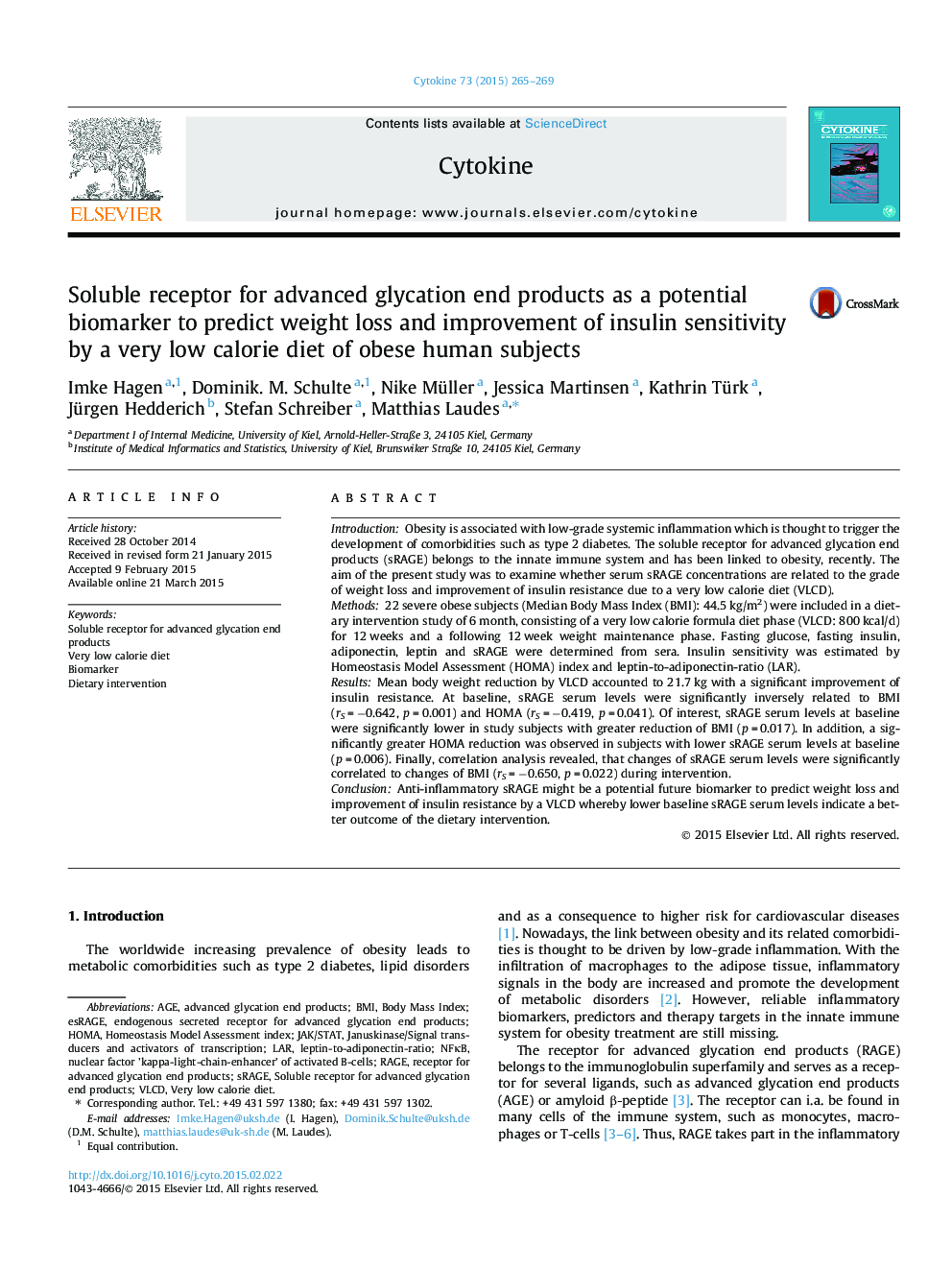| Article ID | Journal | Published Year | Pages | File Type |
|---|---|---|---|---|
| 5897004 | Cytokine | 2015 | 5 Pages |
â¢sRAGE is significantly inversely correlated with BMI and HOMA at baseline.â¢Very low calorie diet does not alter sRAGE serum levels.â¢sRAGE might be a suitable biomarker for success of very low calorie diet.
IntroductionObesity is associated with low-grade systemic inflammation which is thought to trigger the development of comorbidities such as type 2 diabetes. The soluble receptor for advanced glycation end products (sRAGE) belongs to the innate immune system and has been linked to obesity, recently. The aim of the present study was to examine whether serum sRAGE concentrations are related to the grade of weight loss and improvement of insulin resistance due to a very low calorie diet (VLCD).Methods22 severe obese subjects (Median Body Mass Index (BMI): 44.5 kg/m2) were included in a dietary intervention study of 6 month, consisting of a very low calorie formula diet phase (VLCD: 800 kcal/d) for 12 weeks and a following 12 week weight maintenance phase. Fasting glucose, fasting insulin, adiponectin, leptin and sRAGE were determined from sera. Insulin sensitivity was estimated by Homeostasis Model Assessment (HOMA) index and leptin-to-adiponectin-ratio (LAR).ResultsMean body weight reduction by VLCD accounted to 21.7 kg with a significant improvement of insulin resistance. At baseline, sRAGE serum levels were significantly inversely related to BMI (rS = â0.642, p = 0.001) and HOMA (rS = â0.419, p = 0.041). Of interest, sRAGE serum levels at baseline were significantly lower in study subjects with greater reduction of BMI (p = 0.017). In addition, a significantly greater HOMA reduction was observed in subjects with lower sRAGE serum levels at baseline (p = 0.006). Finally, correlation analysis revealed, that changes of sRAGE serum levels were significantly correlated to changes of BMI (rS = â0.650, p = 0.022) during intervention.ConclusionAnti-inflammatory sRAGE might be a potential future biomarker to predict weight loss and improvement of insulin resistance by a VLCD whereby lower baseline sRAGE serum levels indicate a better outcome of the dietary intervention.
